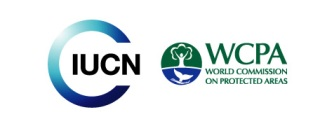Visitor Monitoring in Nature Areas: A Manual Based on Experiences from the Nordic and Baltic Countries
Citation
Kajala, L., Almik, A., Dahl, R., Dikšaitė, L, Erkkonen, J., Fredman, P., Jensen, F. Søndergaard, Karoles, K., Sievänen, T., Skov-Petersen, H., Vistad, O. I. and Wallsten, P. (2007). Visitor monitoring in nature areas – a manual based on experiences from the Nordic and Baltic countries. TemaNord 2007:534.
Download PDF
Summary
Nature tourism and outdoor recreation are important uses of nature
areas in the Nordic and Baltic countries, and the popularity of these
activities seems to be constantly increasing in modern society. Information
on visitors to nature areas is essential for managing outdoor
recreation to ensure quality recreation experiences, tourism development,
the promotion of public health and well-being, and efficient
protection of nature and cultural heritage in a sustainable way.
Visitor information is important at different levels. At a local level, it is essential for land managers, for tourism development, and for participatory planning in areas where there is significant recreational use. At regional, national, and international levels, visitor information is needed for policy, planning, reporting and comparisons.
This manual has been produced by a Nordic-Baltic project group working during the period 2004–2007 on developing harmonised visitor monitoring methodologies in nature areas for the Nordic and Baltic countries. In collecting visitor information, a wide range of methodology has been applied and there is a need to obtain more comparable and reliable visitor information across different nature areas and across time in the Nordic and Baltic countries. This manual represents an effort to put harmonised methods into practice in the Nordic and Baltic circumstances. It is a first step towards obtaining uniform visitor monitoring information, creating a common basis for visitor information statistics and databases in these countries.
The main focus of the manual is on practical matters: how to carry out visitor counting and visitor surveys, how to report the results and how to make use of the information obtained. The manual includes guidelines, recommendations and examples on visitor monitoring methodologies applicable to nature areas in the Nordic and Baltic countries. The approach focuses on onsite visitor monitoring methods, which yield information about the actual users of the area. To obtain information on non-visitors, e.g. potential visitors, one needs to make use of general population surveys, which is beyond the primary scope of this manual.
Keywords
visitor monitoring, outdoor recreation use, visitor counting, trail counter, trail camera, visitor survey, visitor profile




